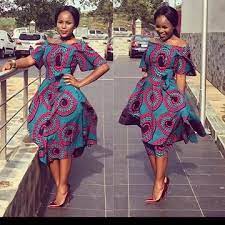African Dresses Styles: Embracing Culture and Fashion
African dresses are not just garments; they are a vibrant expression of culture, heritage, and identity. From bold prints to intricate designs, African dresses styles have captivated the fashion world with their unique aesthetics and rich history.
One of the most distinctive features of African dresses is the use of traditional fabrics such as Ankara, Kente, and Kitenge. These fabrics are known for their bright colours and intricate patterns that reflect the diversity and creativity of African cultures.
Each region in Africa has its own traditional dress styles, with variations in cuts, shapes, and embellishments. For example, the flowing Boubou dresses from West Africa are known for their loose-fitting silhouette and vibrant colours, while the form-fitting Mermaid dresses from East Africa showcase intricate beadwork and embroidery.
Modern fashion designers have embraced African dresses styles, incorporating elements of traditional African attire into contemporary designs. From runway shows to red carpet events, African-inspired dresses have gained popularity for their boldness and cultural significance.
Whether it’s a colourful Dashiki dress or an elegant Gomesi gown, African dresses styles offer a wide range of options for every occasion. They can be styled with accessories such as headwraps, beaded jewellery, and woven bags to complete the look.
By embracing African dresses styles, fashion enthusiasts not only celebrate the beauty of African craftsmanship but also support local artisans and communities. The popularity of African fashion on a global scale has helped promote cultural exchange and appreciation for diverse sartorial traditions.
In conclusion, African dresses styles embody a fusion of tradition and modernity that continues to inspire designers and fashion lovers worldwide. With their vibrant colours, intricate patterns, and cultural significance, African dresses are more than just garments – they are works of art that tell stories of heritage and creativity.
Exploring the Elegance of African Attire: Key Questions About Traditional Dress Styles Answered
- What is the African tunic called?
- What is the name of the African dress?
- Which African country has the best fashion?
- How do you dress in African wear?
What is the African tunic called?
The African tunic, known as a “Dashiki,” is a traditional garment that holds significant cultural importance across various African regions. The Dashiki is characterised by its loose-fitting silhouette, vibrant colours, and intricate embroidery or print designs. This iconic piece of clothing has become a symbol of African identity and pride, often worn during special occasions, ceremonies, or as everyday attire. The Dashiki’s popularity has transcended borders, making it a beloved choice for those seeking to embrace African fashion and culture in their wardrobe.
What is the name of the African dress?
The name of the African dress varies depending on the specific style, region, and cultural significance. African dresses come in a wide range of designs, each with its own unique name that reflects the heritage and traditions of the community it originates from. From the colourful Ankara dresses of West Africa to the elegant Kente cloth garments of Ghana, each dress carries a distinct name that honours its cultural roots and craftsmanship. Embracing these diverse names adds depth and meaning to the rich tapestry of African dress styles, highlighting the beauty and diversity of traditional attire across the continent.
Which African country has the best fashion?
The question of which African country has the best fashion is a subjective one, as each nation on the continent boasts its own unique and diverse fashion landscape. From the vibrant Ankara prints of Nigeria to the intricate beadwork of South Africa and the bold Kente cloth of Ghana, African countries showcase a rich tapestry of styles and traditions. Fashion enthusiasts often look to countries like Nigeria, South Africa, Ghana, and Kenya for their innovative designs, talented designers, and vibrant fashion scenes. Ultimately, the beauty of African fashion lies in its diversity and ability to celebrate the creativity and cultural heritage of each unique nation.
How do you dress in African wear?
Dressing in African wear involves embracing a rich tapestry of cultural heritage and vibrant aesthetics. To dress in African wear, one can opt for traditional garments such as Dashikis, Boubous, or Kaftans adorned with intricate patterns and bold colours that reflect the diversity of African cultures. Accessorising with headwraps, beaded jewellery, and woven bags can further enhance the authenticity of the ensemble. Whether it’s a formal event or a casual gathering, incorporating elements of African fashion into one’s wardrobe allows for a celebration of tradition and style that transcends borders.

